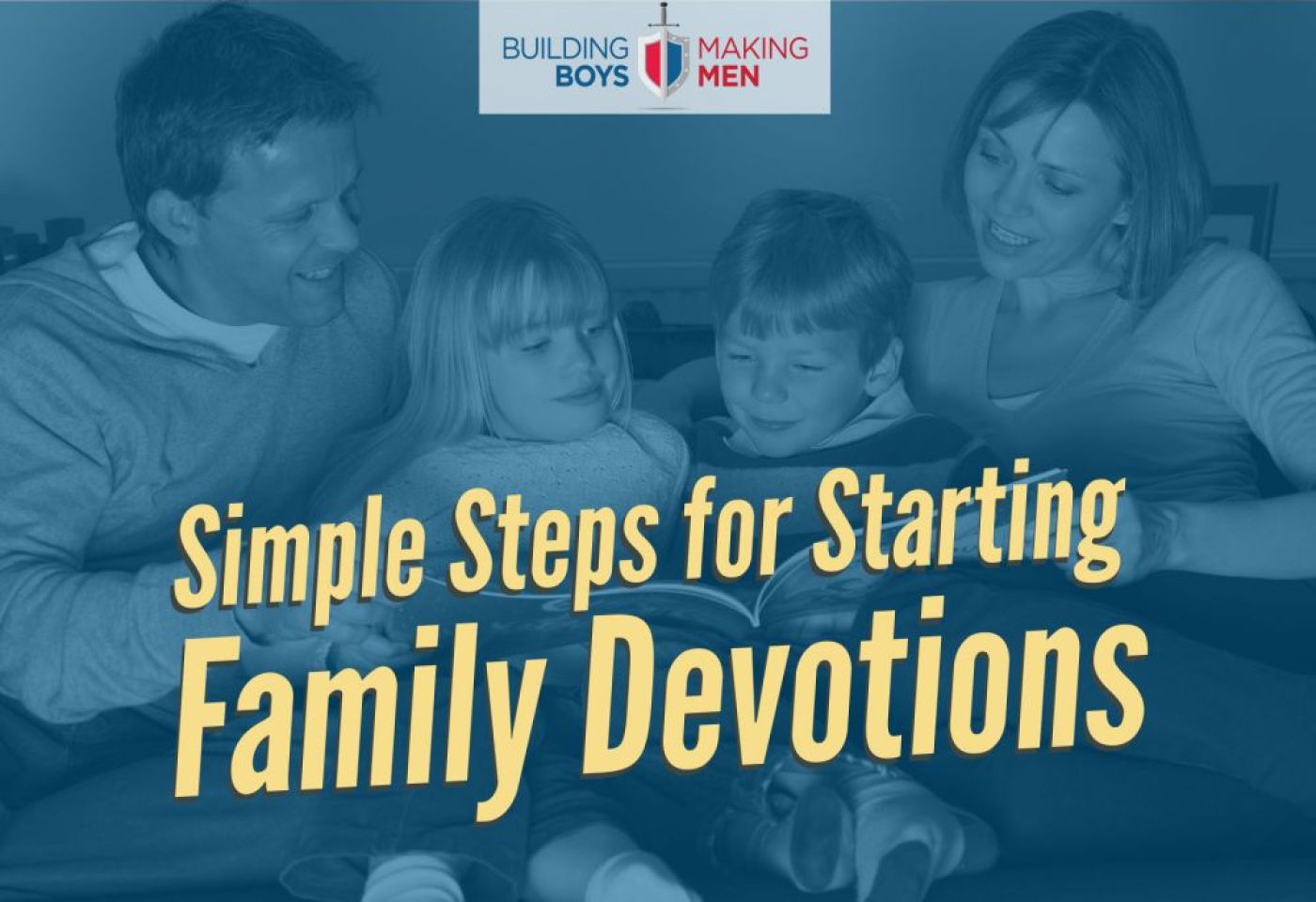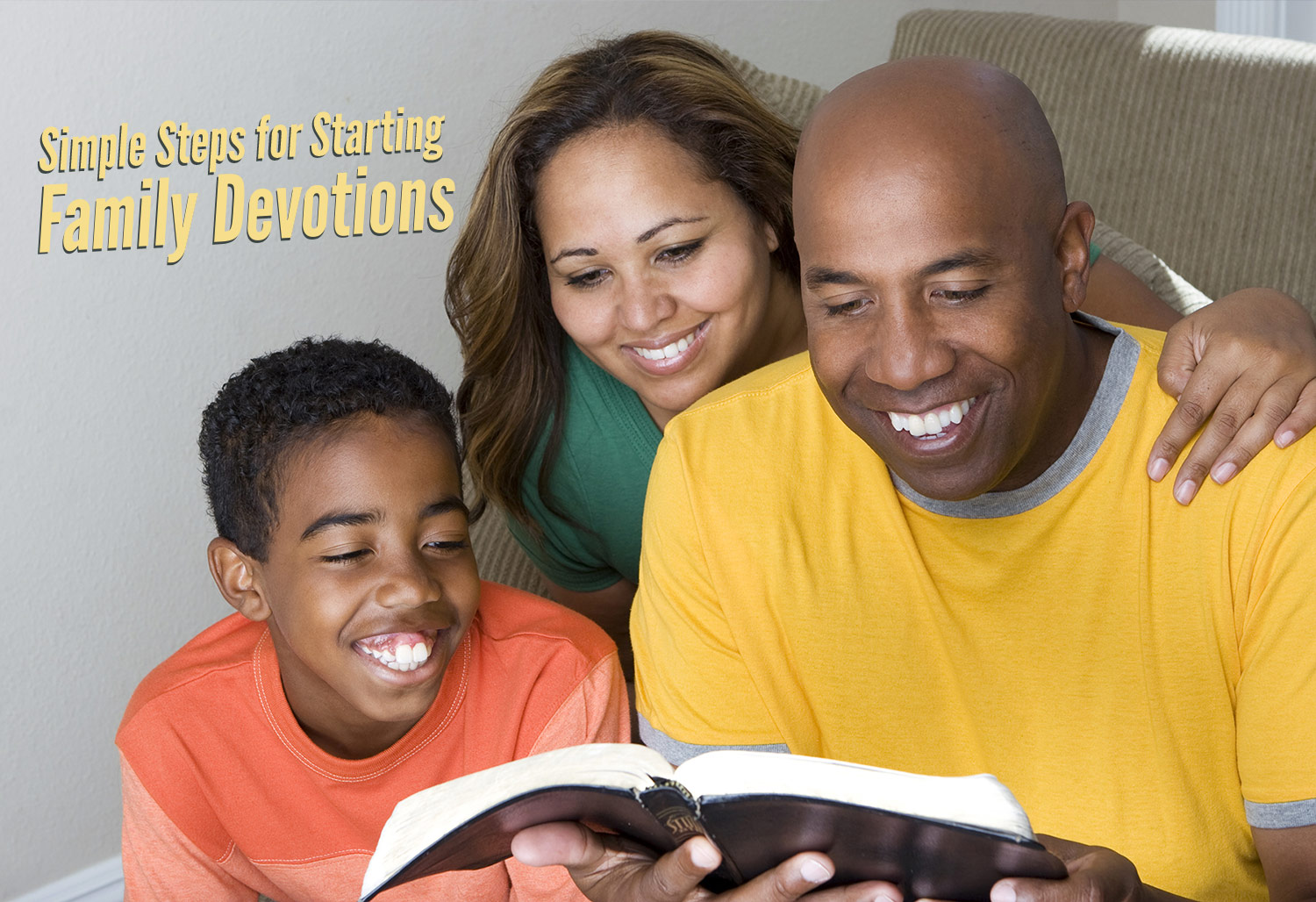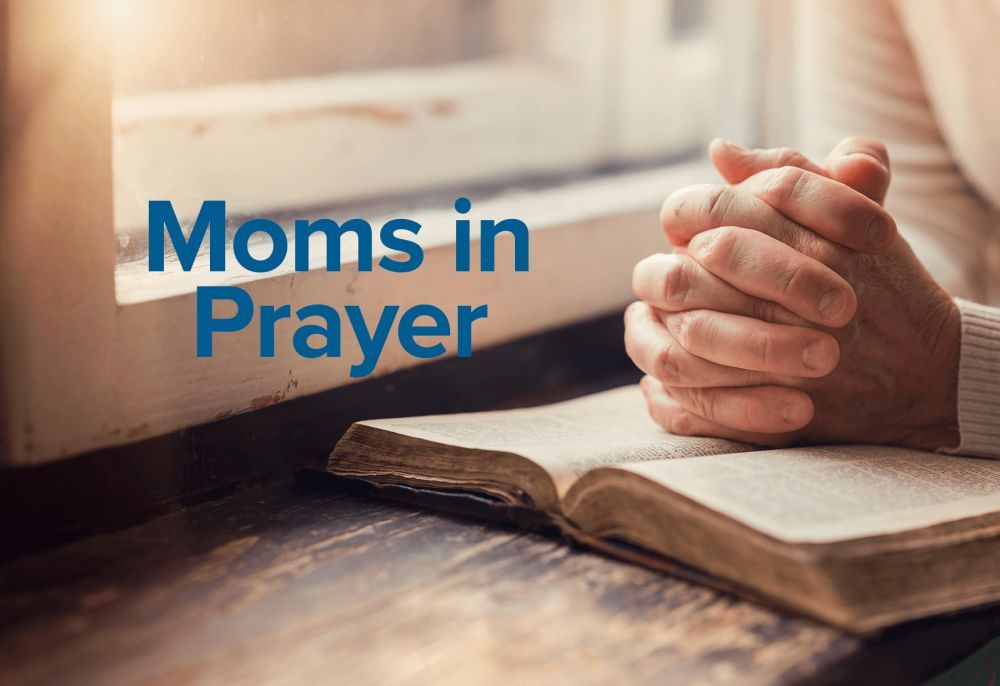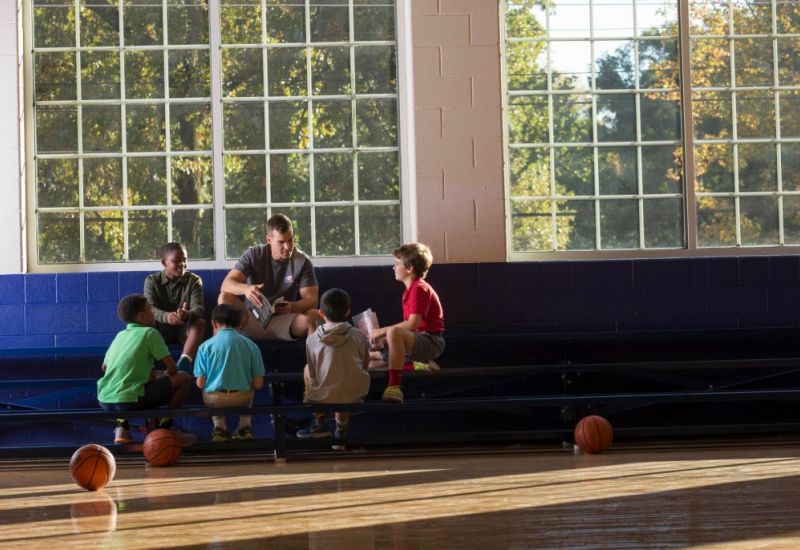Strategic Parenting



Building Boys, Making Men Menu
Simple Steps for Starting Family Devotions This Week
A few days ago, we talked about how to draw near to God. As we get to know God better, we gain real wisdom, and that transforms how we raise our kids, love our spouses, do our work, and everything else. It’s an essential first step—but don’t stop there!
God also calls us to help our families seek God. Today’s post will focus on one way to help our families seek God—by leading a simple family devotion time. This is important because it helps us know who God is and shows us that his Word is so relevant to everyday life.
“Your word is a lamp to my feet and a light to my path.”
Psalm 119:105
Don’t count yourself out because of the chaos of daily life or because you don’t feel qualified. God invites us all to get to know him step-by-step. You don’t need to preach a sermon—as long as you are loving your children and introducing them to Jesus, you are doing it right.
My family has not always been consistent with devotions, but when we have fought for the time to gather and listen to God, God has used those devotions to bless our kids and us. In Psalm 119:105, David tells God that the Bible is “a lamp to my feet and a light to my path.” I want to help my children have that light for their path, and I want to equip you to help your children too. It can be hard to find the time and the place to gather without distractions, but it’s worth the battle.
To get started, here are some simple ideas for the who, what, where, when, why, and how.

WHO:
Ideally, we’d have every family member there every time, but that’s not always possible. At our house, we often need to wait until the end of the day, when our 4-year-old is asleep, before things settle down enough to sit together with our older kids to read and pray.
WHAT:
Here are basic ingredients to family devotions: reading and discussing truth from the Bible and praying together. If you have time, you can add other things like reading a devotional or singing.
WHERE:
Look for a quiet, consistent place with little distractions. For my family, we most often meet on the floor in the boys’ room.
WHEN:
This will look different for different families, but consistency is essential. For us, it’s best to meet when the younger kids have finished homework and are ready for bed.
WHY
It’s an opportunity to know God better and draw nearer to the one who loves you the most.
HOW:
It will look different for every family. Here are two ways we do devotionals at our house, depending on what that night looks like.
“But grow in the grace and knowledge of our Lord and Savior Jesus Christ. To him be the glory both now and to the day of eternity.”
2 Peter 3:18
Option One
Our ideal devotional takes about 20 mins. It can be a little longer when the kids have a lot to say—those are often the best times!
Sing: Sing or listen to Christian music. If you need ideas, ask your son what he’s been singing in chapel, or check our list of favorites below.
Pray: A parent or child opens in prayer.
Read: Read a short passage from the Bible or use a devotional that guides you through God’s Word. In my home, we use Tyndale’s One Year Devotional For Boys, and yes, our daughter loves it too. It’s great for kids ages 5–18 because each day has a one-page story to help you better understand the Bible passage.
Discuss: Take a few minutes to hear from your children about what the Bible and devotional said. It’s amazing how often what we are reading connects perfectly to what is going on in each child’s heart. The Lord uses his Word to speak to you and your children. Most devotionals include questions for discussion, but if yours doesn’t or if you are reading right from the Bible, here are some questions to get started:
- What did you learn about God in these verses?
- What stood out to you from what we read?
- Did anything in those verses confuse you? Do you have any questions?
- How would you sum up what we read today? What was the main point? (This is an especially helpful question to get older kids thinking)
- Is there anything you want to do differently based on what we just learned?
Pray: To wrap up my family’s devotions, we go around the circle, and each person shares prayer requests—sometime about the devotional and sometimes about their life (prayer for friends happens a lot). Next, we go around the circle, and each person prays for the requests of the person next to them.
Option Two
When it makes more sense to take 10 minutes or less, we make it even simpler:
- A parent or child opens in prayer
- The child with the least homework reads just the Scripture from the family devotional (it’s usually 2–10 verses)
- We ask just one child to comment on what they learned about God and how it might apply to their life.
- A parent summarizes the meaning of the Scripture passage
- We close in prayer together
The #1 way to mess up is not to try anything at all. No matter how short your devotions have to be or how chaotic your day has been, if your kids are hearing the Bible and talking to God, you are doing something—the most important thing—right.
Worships Songs PDS Students Love
(with videos and lyrics to sing along):
- 10,000 Reason - Matt Redman
- Here I Am to Worship - Hillsong
- Open The Eyes Of My Heart Lord - Michael W Smith
- Good Good Father - Chris Tomlin
- Christ Alone / Cornerstone - Hillsong
- Holy Holy Holy - Hillsong United
- How Great is Our God - Chris Tomlin
- How Great Thou Art - Carrie Underwood
- What a Friend We Have in Jesus - Matt Maher
Devotionals We Recommend:
Howard Graham

Howard Graham served as Chaplain at PDS and Executive Director of the Building Boys, Making Men program from 2018-2020.
Building Boys, Making Men is a PDS-created program designed to give boys a godly vision and definition of manhood. We believe that boys should be intentionally taught about authentic manhood and have a biblical framework for making wise and edifying choices during their teenage years and beyond. The definition of manhood we teach our boys:
A real man glorifies God by seeking an adventurous life of purpose and passion as he protects and serves others.











